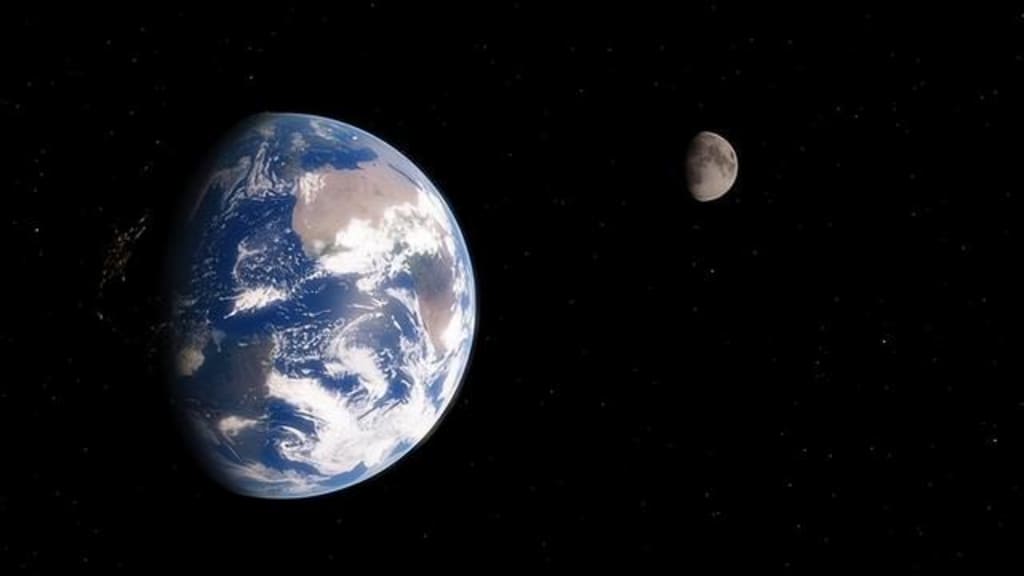Solar surface near 6000°C
Why is space close to absolute zero?

Even though autumn has recently started, the heat has not been kind to us at all. This year, since the beginning of summer, the phenomenon of high temperature will continue to produce, 40 ℃ can not compete for the top ten "hot" cities; heat stroke disease let us know that the original "heat death" is not an exaggerated approach.
However, compared to the sun, the earth's temperature is not enough to see.
The temperature of the sun
The sun is one of the thousands of stars in the galaxy, and may not have many special features, but for the Earth, it plays an irreplaceable role.
Without the Sun, the Earth would be plunged into infinite coldness and darkness, and life would not be born. The sun not only makes life possible, but also allows everything to grow, and every time the sun rises from the horizon, it means the arrival of hope.
It is estimated that the distance between the Sun and the Earth is about 149.6 million kilometers. How hot is the sun itself, which brings light and heat to the earth from the distant stars?
As the core of the entire solar system, the sun's surface temperature is as high as 6000 ℃, the more to the interior, the higher its temperature, and the highest temperature can reach about 15 million ℃. Moreover, the temperature outside the sun, such as in the chromosphere and the corona, the former temperature can reach more than 30,000 degrees Celsius, and the latter can be as high as several million degrees Celsius.
With such temperatures, people are not even close to the direct no.
When the sun's light is emitted from the universe, it is passed to us through the atmosphere. Although the way is far, we can still feel the light and heat of the sun.
And Mercury's temperature of several hundred degrees Celsius also sends us a message that the closer we are to the sun, the higher the temperature will be. But scientists have found that space, which transmits the sun's light, is not a hot existence; not only that, the Earth is already hot, it is still close to absolute zero.
And why is this?
The original cause of absolute zero in space
In thermodynamics, absolute zero is its lowest temperature, which is about -275.15 degrees Celsius. Having such a temperature can be said to be mind-boggling, after all, this can mean that the sun's light through space is a leaf.
Why is the temperature of space so low?
First of all, we need to understand what is temperature. Temperature is a quantity to indicate the degree of hot and coldness of an object, and the magnitude of the quantity is proportional to the degree of hot and coldness of the object.
Each object is composed of molecules derived from ions, so microscopically, the temperature is again an expression of the intensity of the thermal motion of molecules.
The earth is full of various substances, and when sunlight hits these objects, it accelerates their motion, thus increasing their temperature. For example, the temperature of a stone cairn exposed to the sun is boiling.
In addition to tangible objects, invisible objects are also affected by sunlight, such as our temperature. The air on Earth contains various elements, and their movement also raises our body temperature.
Likewise, the reason the sun is warm and so high is derived from the elements within it. The main elements of the sun are hydrogen and helium.
Inside the sun is its nuclear reactor. Here, fusion reactions are taking place all the time, i.e. the fusion of four hydrogen nuclei into helium nuclei. As a result of the thermonuclear reactions, the temperature inside the sun is extremely high and is constantly transferred outward. This transferred energy then spreads around the solar system and is transferred to the various celestial bodies.
The vast space beyond the celestial bodies in our solar system is what we call space or interplanetary space. Unlike Earth, which has a lot of matter, interplanetary space is filled with only a small amount of interplanetary matter. This matter is mostly composed of gas and dust, but its content is insignificant in the vast solar system.
As a result, space is a near-vacuum existence. Because of the extremely low content of matter in space, it is essentially close to absolute zero, even with the presence of sunlight.
However, according to scientists' analysis, the temperature of space did not start close to absolute zero. At the beginning of the cosmic explosion, the temperature of space was extremely high, and later, through the evolution of stars, a large amount of matter was attracted to stars with high mass, thus causing space to become a near-vacuum existence.
The temperature of the Earth
It is thus clear that the presence of matter can make the temperature rise. However, it does not only do so.
For example, the Earth can produce so much life because the sun's radiation is absorbed by the ozone layer, and the energy that hits the Earth can balance the temperature difference between day and night, making the Earth a habitable planet.
However, with the development of human activities, in addition to the role of the earth's materials, many man-made factors are also influencing the rise of the earth's temperature.
The first is the presence of greenhouse gases. Greenhouse gases are gases that absorb and re-emit radiation from the ground, such as the familiar carbon dioxide, methane, and the easily overlooked water vapor.
Although water vapor is a much larger greenhouse gas than carbon dioxide, which is a peculiar smell, it is a much bigger greenhouse gas due to its geography. However, due to its geography, its impact on humans and the planet is not obvious. Instead, carbon dioxide, which has emerged in large quantities since the industrial revolution, has had an increasingly pronounced effect on the Earth's temperature, even producing the so-called "greenhouse effect," which has increased the temperature of the atmosphere.
The rising temperature not only seriously affects the human experience, making people endure increasingly hot summers, but also has a series of bad effects on the Earth, the most notable of which is the melting of the glaciers at both poles. If the glaciers melt, the world's low-altitude countries and coastal cities will not be able to avoid the fate of the sea, and the poles will also usher in the fate of extinction because of environmental changes.
When the time comes, it will be a nightmare for the whole planet.
Therefore, from the point of view of the Earth's temperature changes, not more material in the air will be better. The environment suitable for life is not the temperature, but the right temperature.
The lack of matter makes space close to absolute zero; the existence of matter makes the Earth have a suitable temperature. But in addition to natural matter, human activities are also creating unwanted matter for the earth to affect the earth's temperature.
Therefore, when human beings are developing, they should also slow down and take into account our environment so that our home will have a better future.
About the Creator
Karen Gillanah
The aggravation that can be told is not aggravation; the lover that can be snatched away is not a lover.






Comments
There are no comments for this story
Be the first to respond and start the conversation.